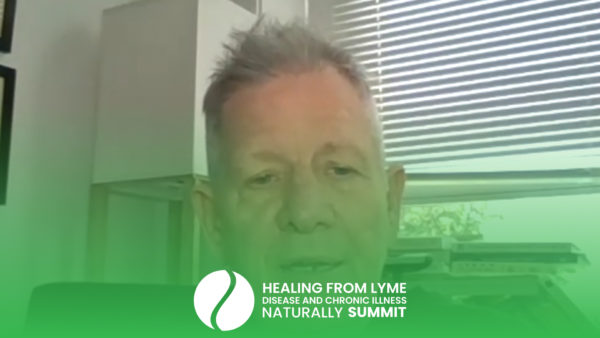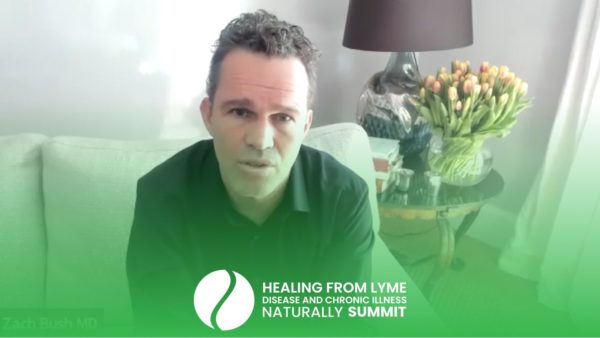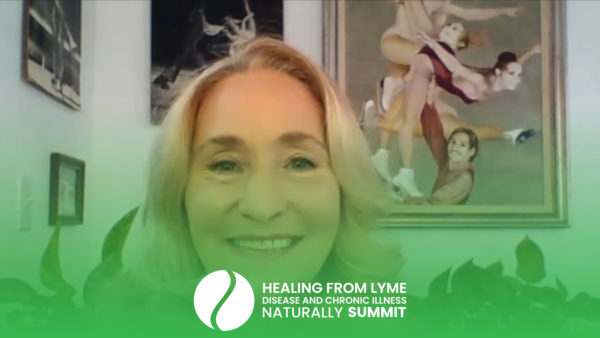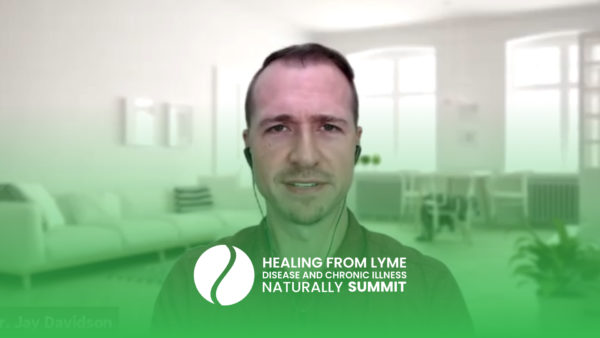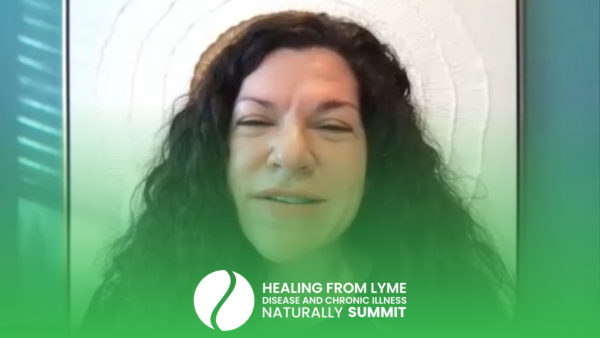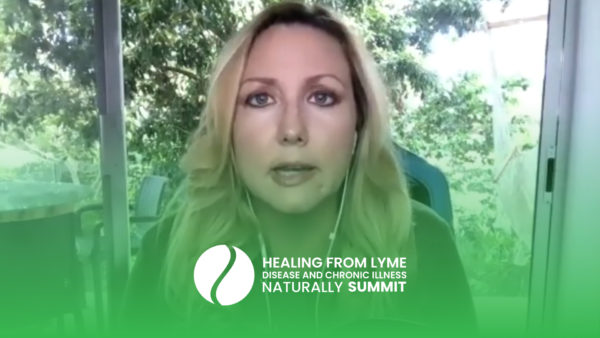Join the discussion below
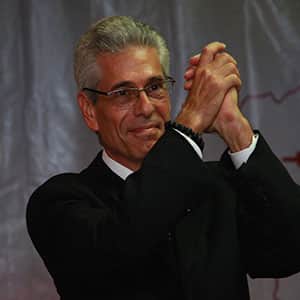
Rob Besner, PSc.D, Co-Founder and Chief Science Officer of Therasage, has always been an advocate of natural health and wellness. Graduating from Boston University in Pre-Med, Engineering, Psychology and Business, he continued onto post graduate work at Case Western Medical School and Holistic Medicine After many years of illness, Mr.... Read More
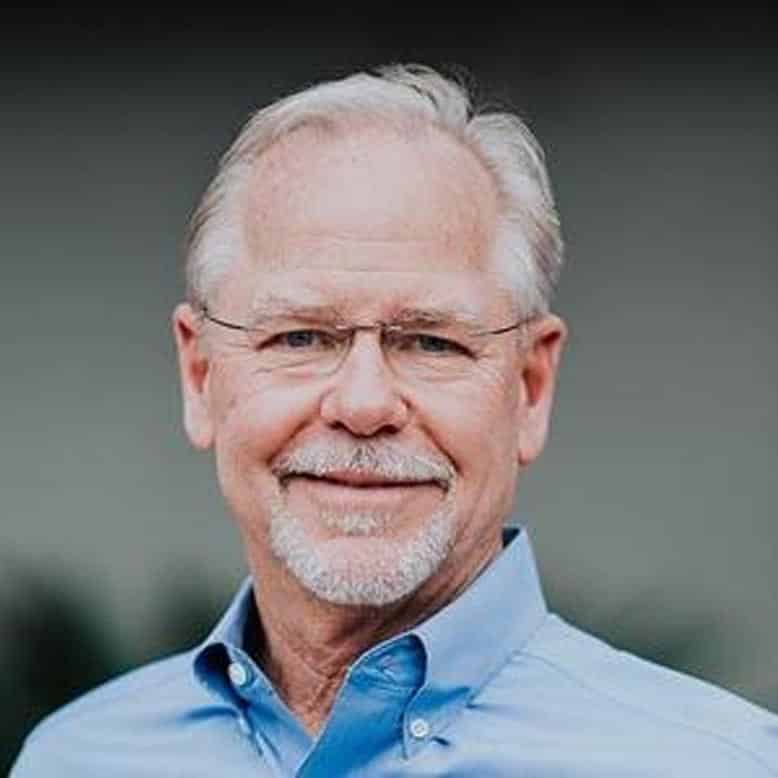
Dr. Stuart Nunnally is a graduate of the University of Texas Health Science Center Dental School in San Antonio (1980). He maintains an integrative biological dental practice in Marble Falls, Texas where he and his partners have treated patients from all fifty states and forty-seven countries. Dr. Nunnally is chairman... Read More
How your oral terrain is the beginning of your immune system and the number one thing you must do right now to protect yourself.
Related Topics
Chronic IllnessRobby Besner PSc.D.
It’s Robby Besner. And yes, we’re back with another interview and this is a Blockbuster Interview. I probably have and will bring on to the Lyme Summit. Healing From Lyme Natural Summit. One of the top, if not the top, Biological Dentists in certainly in the US, I would almost say the globe, and I’ve had my own personal experience with Dr. Stuart Nunnally. He has an amazing practice in Marble Falls. And if you’ve never been to Marble Falls, Texas, it’s probably where God dropped a shoe. It is so stunning and beautiful there. It’s amazing.
So I want to welcome Dr. Stuart Nunnally, not only to the stage or to the summit. Hey, Dr. Nunnally, thank you so much for carving out some time. I know how busy you are. I’ve been in your practice. I’ve seen you work. I’ve never been around or been in the audience in a place like your clinic, that you’ve got so many personnel, and they’re all, it’s like a well-oiled machine. I almost feel like it’s like a Maserati or something you know, and, but yet knowing how important your time is.
When I was in your presence, in your chair, being treated by you. I felt like it was timeless that you gave me the love and the time and the personal attention that I felt that I needed, that I feel that everybody out there, people tuning in today, every Lyme patient listening today, you’re all special. And you deserve the attention of, and the caliber of a practitioner like Dr. Nunnaly. So with that, welcome to the Lyme Summit. Can you spend a minute or two and give us a little backdrop of, you know, like your interest in dentistry? AS it always been in dentistry? You are a particular kind of dentist. That’s not just a normal dentist. I would call you and maybe to correct me if I’m wrong, a “Biological Dentist”, which is sort of the new modern dentistry and applications. So how’d, you kinda get started and interested in that, and then walk us forward as to like the things that you focus on in your practice today.
Dr. Stuart Nunnally
Thank you, Robby, for that kinda introduction. And that, let me just say, when you talk about being listened to, I think there’s probably nothing more important than we can experience either as a patient or as a practitioner, than really listening to someone. And really trying to hear everything that the patient has to say. I think that’s as critical in terms of helping someone with their health as maybe even doing the procedures themselves.
I think I learned that most when, years ago I got sick myself 20 years ago, and it was a tough time. My wife and I’ve told people this before, you know. It looked like I had ALS I was referred to the ALS center in Houston. I didn’t have ALS, but I was convinced that I did, which is by the way, makes it just about as bad as having that disease. And I remember my wife and I, we were so sad. We had children at home. I mean, you know, we would literally cry each other to sleep at night. And so when I went for treatment, I actually went to Montreal and I had this beautiful elderly man sitting in front of me, he was sort of the godfather of holistic dentistry. His name was Hal Huggins. And he sat there and he listened to me and he listened intently. And he gave me such hope because honestly at that point, things looked so bleak for me in terms of the rest of my life and this side of heaven, at least it looked like it was going to be a tough go.
So I’ll never forget him sitting there listening. And then finally saying, you know, I think you could whip this. And he wasn’t leading me down some money trail. He was, there was no false hope though. Hee was, he said, no, I think we can whip this. And I remember looking at my wife, Rebecca, and thinking you know what, that’s the first time I’ve heard that in a while.
And I was so grateful for that. And so I think as a result of that, Robby , I learned the importance of listening and the importance of giving patients hope. Because as you know, there’s going to be many people in the audience here who feel hopeless, and that’s a really, really, really tough place to get an eye. Before we talk about the technical aspects of what we do for patients and Lyme patients in particular. The thought the scripture that I landed on was that beautiful scripture that says be transformed by the renewing of your mind. When I began to really honestly believe that I could get well, it was instrumental. And even though it was a slow journey, it was really three and a half years before I regained my health. I got it in my head. You know this is a possibility again. And so I always tried to give patients that encouragement, because I know what it is to get on the edge of being hopeless. And that’s a very tough place to climb out of. So I’d encourage your listeners today, there’s not one, there is no one who should feel like they’re without hope.
Robby Besner PSc.D.
I mean, when you talk about, you know, your health challenge, this isn’t trivial, you weren’t just lightly symptomatic. You went from an iron man, triathlete, somebody that was basically a weekend warrior to having trouble getting in and out of cars and needing really assistance. So, and there might’ve been, it might’ve taken time before you got to that point. But still, and sometimes that’s in itself is depressing and has a lot of emotional challenges to it as well. And so coming out at the other end of that tunnel and just understanding the power of the will to live and having hope and also understanding how regenerative the body is, how we are built with all these systems and resiliences that really you know, it’s, remarkable.
And we see it every day in our clinic, how people just, you know, take some people respond quickly, some take a little longer. But when you give people the right combination and the right order, boom, their bodies really do all the heavy lifting and they want to get back to, they wants to get back to health. And so your words and your wisdom and your own stories is truly amazing and very inspirational. So, and you mentioned how Huggins, that guy is not trivial.
He’s probably the father and the founder of what they call Biological Dentistry, Modern Dentistry today. So this isn’t just the average guy that was giving you hope he’s the icon, you know, and that’s pretty amazing. So I appreciate your words and certainly, you know, part of that backdrop for everybody to listen to today. So yeah, it is a story about Lyme and you know, interestingly enough, when I was being treated by you, one of your attendees assistants, they took a little scrape of my mouth, my tartar, and then they brought it into another room and they paddle it under a high powered microscope. And I said, hey, can I look at that too? I’m kind of, you know, I’ve seen live blood analysis and all that. And so, yeah, they brought me in and I looked at this and there was amoeba swimming around and it was Lyme disease swimming around.
Like there was all this stuff swimming around in this little sample that you took, this was tartar, but certainly you can see that in blood samples as well. I was amazed, one that you even had that device there and even care to look that deeply microscopically deeply into the microbiome, the living organisms that were occupying my mouth. But certainly that I had a chance to see that. And as elated as I was, it was kind of scary to think that there’s all these organisms that are living there and we talk about it, but to see it in live. And I mean to see it, in with my own eyes. But then to see it actually live was also another dimension that I thought was incredibly interesting. So let’s talk about maybe a little bit about lyme in, as you see it in your practice. Is it something very common? Do you see that very often?
Dr. Stuart Nunnally
It is common and I wish I had, I’ll try to do better and keeping a record of how many lyme patients we see. I would say it’s at least 20% of the patients that are referred to us have lyme, you know, that combination of lyme and mode exposure, and various other autoimmune diseases. Almost, I can hardly think of a patient I’ve seen even in the last five years who had had some sort of thyroid disease, usually Hashimoto’s, but oftentimes graves to all that combination that your audience is used to dealing with, is what we see. And the reason we see that group is because, well, part of it is because I got sick myself, which by the way, turned out to be one of the greatest blessings in my life.
But it’s not only that it’s because there are physicians and caregivers around the world who understand that the toxicities associated with dentistry, can also impact these organs, that lyme, mode, other heavy metals and other toxicities impact. And so, these healthcare providers in that group of patients, we happened to see an interesting niche of patients, almost all of whom have some systemic degenerative disease. And they’re referred by someone who’s expecting us to clean out or eliminate the toxicities in terms of oral toxicities so that the immune system has a greater chest to function.
You’re exactly right in saying that the body wants to get well. And oftentimes we’ll reverse one or two key things. We can flip this downward spiral that we had going on into an upward spiral that finally we see ourselves beginning to get well again, in all, as you know, when you flip one or two of those things, then you feel like getting out of bed and actually walking out in the sunshine and maybe eating something more appropriately that day. And all of a sudden you develop this whole new set of, oh, it’s a hope.
It’s a cascade of hormones and wonderful, beneficial, little cellular substances cytokines that begin to improve and we begin to feel better. And then the next day can even be better and then better and better. In my own life As I recovered, I would have many good days and then occasionally I’d have a bad day or I might have a couple of really good months. And then I would have a bad month. It’s not uncommon to cycle like that. But the key is that is the point you made is that the body is entirely capable of healing itself, Once we remove the toxicities.
Robby Besner PSc.D.
Inputs, bang, you know, most people think about dentistry, well, I’ve had a feeling or ate too much candy, and I need a filling. I’ve got a cavity, and they don’t really understand the connection of oral health, what that plays to your microbiome, what that plays to, how that plays to your general immune system, how that boosts your immune system. And that’s why I love the category you’re in. And I love the way you look at it because you’re actually treating the whole person just starting off by warming me up. And, you know, I know that you gave one before I even saw you. I had a ROM therapy and there was a gentle massage.
I was like, you took all of the fear and that out of me, that most people associate with them with dentistry or having dental work done. And so by the time I got to you, I was so calm. And that parasympathetic state that I didn’t care what you said or what you did. It was all perfect. I felt great and ready to go. So I think that that’s important because it’s, very unusual, but I want to go to a place that I think is really important. We were surrounded with wonderful, integrated functional doctors like Dr. Lee Cowden and Dr. CB Heinz. These are all people that will constantly refer their patients to you. And they’re dealing with the toughest patients out there. And it always, that’s what I’ve heard your name for years, and couldn’t really wait to get into your practice and doctor Nathan Bryan was another one.
He actually made the calls to help me get into your practice. Right? So, it always amazed me about that, but all of them say the same thing to me. You’ve got some chronic challenge and they deal with the worst of the worst, but they really won’t start to address the chronic challenge and its root cause until they get the dental complex, their dental profile back in order, get that house back in order. That’s how important dental, practice or good dentistry, good oral health is to general health in its time and in its entirety.
And so you kind of talked about it a little bit and people out there they are listening, they focus on, they have lyme, they get in contact with mold all of a sudden they get whacked out. Right? So, that’s kind of how I see this. It’s like, I can’t really treat the Lyme because if you’re still being infected, let’s say like me, I had an infection in my mouth that you helped me come through. And if I still had that stress of that infection in my oral health, it really was hard for you for any practitioner to deal with other symptoms like Lyme or the, you know, co-infections that travel a lot with Lyme or mold or any of these problems until we get that house in order. So let’s kind of talk a little bit about that. If you don’t mind like the importance of having, you know, good oral health, good oral health habits, to actually get you out of that negative spiral and back on track to good health.
Dr. Stuart Nunnally
Sure. Well, it’s such an overlooked part of the overall puzzle. The dental part of it is, and it is a puzzle. Sometimes the toxics disease associated with dentistry are a huge part of the overall systemic health puzzle. Maybe sometime they’re only 10%. It’s hard to say. Oftentimes we can discover that what the size of the dental issue is based on a patient’s history. For example, some patients will report, oh, I had, you know, my lupus or my rheumatoid symptoms began right after this dental procedure or within the weeks after dental procedure. Or we get in kinda get a feel as to what may be the precipitating factors are in their disease.
But what we do know is anytime you have a health challenge, let’s say, for example, there’s not a physician in this world, an orthopedic surgeon, that’ll take you into surgery. If you have a known infection, An orthopedic pedic surgeons is not going to try to replace your knee or your shoulder. If you have again, greenness lesion on your leg for Pete’s sake. Well, many times the lesions and the disease state we have in our mouths will replicate literally again, green this lesion. In fact, when we look at them, the oral microbiome under a microscope, sometimes that microbiome gets so skewed, toward a very, very, very unhealthy microbiome that we just look at each other and our office and say.
There’s no one or this patient cannot get, well, this is such a challenge. And this is very, very well detailed now in the literature. I mean the bacteria that are in our males, I’m not even talking now about the heavy metals. We can have a two-day discussion on mercury and nickel and arsenic and all the other metals that we find in dentistry. I’m just talking about in the toxicities associated with the bacteria that can overgrow in our mouth as a result of an unhealthy microbiome. Those toxicities and the bacteria themselves are now very well studied. And why now they can be associated with everything from depression, believe it or not. Can you imagine that having an emotional and psychological impact to heart disease, to cancer, to liver disease, there’s not a system in the body that’s not impacted by the toxicity is associated with the bacteria that we find in the old microbiome. So we have, if we don’t pay attention to that, trying to heal a systemic health condition in the presence of that is an uphill battle.
Robby Besner PSc.D.
Alright, well, that makes way sense. You know, I want to bring in something that I’ve studied in the past. It’s the whole Eastern approach to medicine like the Asian Eastern approach, which, where they have these energy meridians. And if he took, there’s actually studies and books on this that will tie and correlate each tooth to a different energy meridian in the body. And so you have an infection in a tooth or even a root canal, which was part of my challenge too when I came to see you. And that root canal becomes almost a portal, even if it’s done right. And I don’t know if there are any root canals that can be done right.
There’s a lot of controversy in that topic by itself, which we won’t get into today. But let’s say you have a root canal. That root canal becomes almost a portal to bring a lot of the bacteria that might be living, not the kind that are living in your mouth. And now it’s almost a direct channel right into your bloodstream, which can bring us into a whole lot of unhealthy circumstances. And so that was one of the reasons why I came to and waited a long time to get to see you finally, I’m so happy that I did because of that challenge. And so I thought that, you know, it is a story about toxicity and you did touch on heavy metals and metals are used in amalgams and we do talk about that too, taking amalgams out and the off gassing and the mercury and the challenges there, and many of the line people that are checking in today, they all have that stuff too.
That’s just in their dental profile. What about the environment that we’re living in? That’s bringing all the pesticides and all these other stressors, and it’s really remarkable. And it just takes one little thing to tip you over that put you on the other side of the fence of bad health and disease. And so that’s why I really loved talking with you today and stressing the importance of a good dental practitioner and certainly good dental health, good oral health as a part of the rudimentary platform, for getting, for clawing your way back, no matter what your challenges, it’s going to be important.
And so when you talked about, well, as I mentioned about, let’s say acupuncture and acupressure, these meridians, I looked at where my root canal was, and I actually have a friend that was suffering from breast cancer and what happened as you described it, first thing the doctor said, take care of your mouth, got when got the root canal. As soon as that tip taken out, as soon as that was taken out. And that stressor seemed to have been relieved and that area healed up. All of a sudden the symptoms, her cancer symptoms started to diminish and eventually went away. So that’s how impactful, just something like a root canal on a certain energy Meridian, that’s feeding energy to a certain part of your body, that’s now not functioning properly because there’s a block of some kind.
Dr. Stuart Nunnally
Right, and, you know, see Robby, that’s the interesting thing is you, you’re one of those in the Western part of the world who understands this. And of course in most of the world, this would be absolutely normal. Something we would consider as something that we would look at, we would certainly look at the energy meridians. But you know, most practitioners now around the world understand this fact.
But if you have a dead tooth or a root canal treated tooth on a Meridian, it actually serves as a circuit breaker for that flow of energy. And so whatever organ is on the Meridian is going to be impacted. And, you know, again, most of the world understands that, but we fail to acknowledge that for the most part. And certainly many states. In fact you can be shunned and ostracized for acknowledging.
Robby Besner PSc.D.
Guy, I know all about that. That’s the politics, it’s unfortunate, but that’s again another feather in your cap because you are multi-discipline, you look at everything, you want that toolbox of yours to be as full as it can with the most modern techniques. And also the most, you know, multicultural kinds of strategies and protocols. You come to into the room with all of that armed with all of that. And so then when you go through the process of understanding the compressive complexities and create some kind of a game plan, it kind of lays itself out and you do really cover it base to base and really the most gentle and the most professional way that I’ve ever experienced in my life.
So I can’t speak enough of you, your staff, and what you do at your practice. So, you know, earlier you just mentioned something about the curse in your own experience, and I’ve said this, and it’s come up a couple of times in interviews where like getting Lyme is like a blessing. Like how could that be a blessing? I know there’s some biblical stuff about blessings and curses and how closely they’re related. And I, when you’re flat on your back with lyme, it’s hard to say that’s so hard to even understand how it could be a blessing. But like your story, and I’ve heard this time and time again. Coming out, just understanding, figuring out what it is and coming out of that, the deepness or the darkness of the being at the bottom of the barrel or the end of the tunnel and coming back out.
And then, and also the family members, everyone around you, it takes a lot of fortitude. I’m sure that you were unwavering in your own. Once you got that will to live and got that spark from Dr. Huggins, you just said, okay, I can beat this. If I can run a thousand miles and climb trees and ride bikes and go swimming and do all these competitions, I can beat this one too. And I think that that is very inspirational for a lot of people out there. But I do believe, and I’ve seen this even in our own personal journey that just understanding coming out of all this. Even Parasomnia our company came from what I consider a curse or a strategy, or might’ve seen that way. And now with our force, you know, I’ve really seen myself as a vessel, frankly, but it gives me the ability to touch and change so many people’s lives as the summit is as this interview. Well, so I thank you for that. So let’s just talk about a little bit about toxicity. What kinds of toxicities could people have in dentistry and what do we do about it? what are some of the things that you would recommend that we do to lower that toxic burden?
Dr. Stuart Nunnally
Well, most people think about dental toxins. They think about Mercury because it’s been used as a filling material for many many years with the American dental association has had the opportunity over the years to abandon it and to just come clean and say, hey, we made a mistake. Unfortunately, the American dental association and other dental associations around the world continue to adopt its use. And that makes no sense whatsoever anyone, any lay person understands that mercury is extremely toxic. Second, only to plutonium. And the fact that we would use that, especially put that in someone’s mouth, or they’re going to be exposed to it 24 7 until someone takes it out is regretful at the very least. And I think incredibly impactful to our overall wellbeing. So that’s probably the toxicity we think of most. Other metals that are very toxic and dentistry, nickel is one that’s been used forever.
It never should have been used in dentistry. And then there are other trace minerals, arsenic, and others that have been used also. So that’s that, but probably I think as equally as important are the toxicities associated with bacteria that are in jaw bone infections. That can be either in root canal, treated teeth or dead teeth, that don’t have to be root canal, treated teeth, they can just be dead. And these are the Lesions that we talked about earlier that made that really resemble again, grayness type lesions. They have the same types of anaerobic bacteria. They produce potent toxins. And so we see that in root canal, treated teeth, dead teeth, and we see them in what are called cavitations. And that cavitation being an area of the job bone that has a very stagnant blood flow.
Usually it’s where a wisdom tooth has been removed. Not always, it can be where any tooth has been removed, but it’s usually an area of the jaw that’s had trauma to it. The jaw bone is one of those bones that has a weak blood flow in the beginning. And so you can have an area damage retard, the blood flow even more so to the point of the fact the blood flow even quits. And now you have, what’s called an Osteo Necrotic, osteo meaning bone, necrotic meaning dead, and ostial necrotic area in the bone. That is a beautiful place for anaerobic bacteria, bacteria that don’t need oxygen, enable bacteria to thrive and then produce their toxic. Those are areas of the jawbone that can be incredibly impactful toward our systemic health. And that’s most of our, what we do in our office is cleaning out those sorts of areas. And of course eliminating the metal toxicities too.
Robby Besner PSc.D.
You know, I I’m dating myself here a little bit cause I’m kind of an older guy, but I remembered the first time I got feelings and so forth. And I grew up in New York and then we moved, I moved to Chicago. And I remember when I moved to Chicago, my dentist there, first time he looked in my mouth, he said, oh, you grew up in New York. I could tell just by the way your dentistry was done, apparently there’s regional techniques or something that actually can expose that part, which I found amusing. But one thing that always troubled me, I was questioned about was that there’s this like a red container that’s used for toxic waste, right? So now the dentist is putting in the filling. And again I had amalgams, which is the combination of metals and it scrapes away, you know, to the finer part of the, after the filling is in, he scrapes away certain part of that metal to re sculptor the filling or the tooth, so that it has the contour as it did when it was natural before the cavity was there and it was filled with it.
And he’s carefully scraping away these metals, and he’s collecting those metals and he’s putting it into this toxic waste container. That’s red mark toxin with a skull and bones on it, big crosses, like everything that we know is being carted off at some point, right? To some toxic waste area. Now I did could never reconcile how that was going on yet that same metal that their top carting away that’s “super toxic”, is being installed in my mouth. I never understood that. And then I don’t know what particles per million, I’m sure there’s some technical terms and a lot of white papers and essays that have been written on this, but you know, these metals break down when we make an infrared sauna, we make one particularly where your head is out for that reason, because when you heat up the metal expands and when it goes off it then contracts.
And in that process, you off does mercury, it may not be a scraping, but it’s just as toxic as the metal itself. And so we did that on purpose so that we can maintain the integrity of the body and not have that interaction, particularly for people with chronic challenges like chronic Lyme. And so I really am happy that you brought that up. And I think that, you know, lowering that toxic burden when you come into having procedures done is sort of important. So that in the process of the procedure and in your, I didn’t have the benefit of seeing it, but I believe it was there. Proper ventilations and all these other things. I didn’t see it because I was under influence of some kind of anesthesia. So it was very light I was Twilight, and I know those devices were there, but without proper, even with proper dental ventilation, I do believe that there’s still particles of this off gassing that happens. And so that detox process is so, vital.
Dr. Stuart Nunnally
Oh yes.
Robby Besner PSc.D.
so.
Dr. Stuart Nunnally
You’re right. You’re exactly right. And I think it’s important for your listeners to remember when they have these mercury fillings removed that it’s done in a very controlled environment and the International Academy of Oral Medicine Toxicology IAOMT has developed a protocol, it’s known as the smart con protocol. All the acronym smart stands for safe mercury amalgam removal technique. And so, as your listeners think about seeing the dentist in the future, they could look for a smart certified dentist who belongs to IAOMT international academy of oral medicine toxicology. Be a great way to get started in finding a holistic dentist.
Robby Besner PSc.D.
What are some of the ways that people can get a hold of you and get a hold of your practice? You have the most amazing, most beautiful website, like everything else in your office. Meticulous, beautiful, pleasant, great feeling. When I go on. And is that the one that’s wwwhealthysmilesforlife.com?
Dr. Stuart Nunnally
That’s Correct.
Robby Besner PSc.D.
Okay. So it’s all spelled out healthy smiles for life.com. That’s probably the best way. Are there other ways, do you have an 800 number or anything like that?
Dr. Stuart Nunnally
We have all of that, but I don’t know any of it. And I think the website would probably be the best way.
Robby Besner PSc.D.
Perfect. Perfect. Well, I know your time is sparing. We had a wonderful time together. We’ve only got a few minutes left, you know, is there a temper too, that you can offer me the lyme? I’m now your lyme patient. And you took a look at my mouth and you don’t love what you see and I’m symptomatic. So what’s something I can do tomorrow, or the next couple of days, one or two things that you might want to recommend that I can start doing right away, that might change my oral presentation, that I can actually start and utilize as soon as tomorrow? what would you recommend?
Dr. Stuart Nunnally
This afternoon? You’re going to go to your Walgreens or Walmart or target, and you’re going to get a water pit and then that water while you’re walking down the aisle, you’re gonna stop at the hydrogen peroxide section. And you’re going just take a old 3% round bottle of hydrogen peroxide home with you. And in that water bath of the waterpik, you’re going to put about an ounce of hydrogen peroxide, and then you’ll add seven or eight ounces of water, and you’ll turn the waterpik up that as high as you can stand it. And you’re going to try to jet between every two under the gum line and flush out the bacteria and give the microbiome an opportunity to correct itself.
We find many potent anaerobes that do not like the oxygen that you find in hydrogen peroxide, and it’s a wonderful deterrent and a wonderful way to help improve someone’s health. Literally overnight, the bacteria, for example, that I was talking about that concentrate themselves in cavitations and root canals are also found concentrated in that little gap between the gum and the tooth. And by irrigating that out with hydrogen peroxide in the water bath, you’ll do, surprisingly, a wonderful thing for the body in terms of its ability to heal itself.
Robby Besner PSc.D.
How simple and how easy and how inexpensive, this is something that everybody has to do, whether you have a dental challenge and a dental profile, or not, whether you have a lyme or not. But starting, most people don’t understand that your GI tract actually starts in your mouth and your nose. They think that your GI track is just your gut, but it really starts all up here. And then all the adjustment process starts right up here. And so, and when you talk about anaerobes, people hear that word, but then anaerobe, or a microbe, these little organisms they’ve lived pretty much in harmony in our bodies. They’re used in a healthy way for, you know, to create good digestion. And then we’ve got the bad guys. And so an anaerobe by definition, doesn’t really like a lot of oxygen.
They actually thrive on very, very little oxygen if none at all, and so using a prophylactically or even using it as a protocol, bringing more oxygen ozone or hydrogen peroxide into your mouth is going to chase these guys out. And then using a waterpik, you can’t get this with a toothbrush. That’s just the surface. We wouldn’t need to get down into the gum beds. That actually is where most of these guys like to hide and live. So great advice. Amazing interview love having you on the launch summit. Thank you so much, Dr. Nunnally for joining us today. You’re amazing. Thank you for the fortitude for your unwavering approach to dentistry and, and what you do. You change lives every single day with who you touch and what you do, you and your staff. Thank you again.
Dr. Stuart Nunnally
Thank you, Robbie. What a privilege to be here then
Robby Besner PSc.D.
Super cool. Thank you, sir.
Dr. Stuart Nunnally
Thank you too.
Robby Besner PSc.D.
Hey everybody, It’s Robby Besner thanks so much for joining us today. Please share this content with anyone that you think might benefit from it. And we’re looking forward to having you with us tomorrow for another great interview.
Downloads



